- Home
- Jack London
The Assassination Bureau, Ltd. Page 2
The Assassination Bureau, Ltd. Read online
Page 2
left a great void in him, somewhat akin to hunger, but a void which ached and ached, and which food could not fill. At times, when he paused to contemplate the carcasses of the Yeehats, he forgot the pain of it; and at such times he was aware of a great pride in himself—a pride greater than any he had yet experienced. He had killed man, noblest game of all, and he had killed in the face of the law of the club and fang.
The totemic system London founded in the narrative of Buck might be understood as a linguistic compensation for Anna Strunsky’s having unexpectedly broken off their interethnic relationship in September of 1902. But it is more simply an early indication of the racism that would eventuate in the notorious diatribes London directed in his subsequent writings against what he called the “yellow peril,” and that would entail as an addendum to what has been called his “white logic”: the proposition that he placed race loyalty above his obligations to international socialism. By 1903, U.S. imperialist ideology had mutated home-grown antiforeignism into a comparable strain of racism whose symptoms are discernible in the following observations from Henry Pratt Fairchild’s The Melting Pot Mistake:
What such a country really needs to concern itself about is the effect of race mixture. . . . If we can imagine the mating of two persons of absolutely pure stock of different races, each of the offspring would receive half of its determiners from the germ plasm of one race and the other half from the germ plasm of the other race. In other words, they would be strictly half-breeds . . . the mongrel.
London’s contribution to U.S. imperialism now limited such experiments in breeding to his animal protagonists. The willingness the mongrel Buck displayed in The Call of the Wild to sacrifice his life in executing John Thornton’s will would be subsequently acted out on a much larger scale in the U.S. imperial adventure whose dates more or less coincided with Jack London’s personal chronology, and whose trajectory—Hawaii, Panama, Cuba, the Pacific Rim—London’s later tales would retrace. In White Fang, the sequel to The Call of the Wild, London redescribed the entirety of the Klondike as the narrative property of the gold prospectors who had depleted the region of its resources. Whereas The Call of the Wild had recorded Buck’s regressive adaptation to the wilderness, White Fang reversed direction and described a wolf’s transformation from a natural force into a surrogate national agent. White Fang’s progression from Klondike nature to U.S. culture reenacted as its plot the nation’s imperialist design.
The reversibility of the two plots mirrored a larger reversal at work in the ideological accounts of imperialism wherein the acquisitive drives of an imperial adventurer were transcribed as defensive reactions directed against what these adventurers described as the senseless aggression of native populations. By finding it thoroughly acted out in companion dog stories, London effectively reinscribed the entire circuit of U.S. imperial appropriation—its aggressive policies of colonial annexation followed by the blandishments of acculturation—upon the “white silence” of the Klondike. Delinking White Fang from the network of associations he shared with Northwest tribal communities, London realigned his interests with the more inclusive project of U.S. imperialism in the South Pacific, in which such later writings as The Cruise of the Snark, South Sea Tales, The House of Pride and Other Tales of Hawaii, and The Son of the Sun would play a significant role.
The dramatic shift in London’s narrative attention from the kinship between wolves and men in the Klondike to the secret society of The Assassination Bureau, too, requires a more complicated explanation. Ivan Dragomiloff, the protagonist of London’s unfinished novel, in fact had more in common with the patient Sigmund Freud named “Wolf Man” than with either the “Son of the Wolf,” his precursor in the London archive, or the werewolf from the popular imagination.
I mention Freud’s patient here as a point of historical reference and to provide a linkage between an obsessional theme in London’s writing and a lifelong pathology. Jack London shared the Wolf Man’s intense anxieties over the conditions of his parentage. The writer’s intense fascination with wolves originated with the coincidence of two events: his reading of Rudyard Kipling’s The Jungle Book and his discovery that he was William Chaney’s illegitimate son. After reading the tale of a human child raised by wolves who instructed him in how to survive nobly in the wilderness, Jack London imagined himself a feral child for the remainder of his life. By way of this fantasy London defended himself against the images of violent dispossession—seven white wolves sitting outside his bedroom window—inhabiting the Wolf Man’s dreams.
The Wolf Man shared the social space inhabited by were-wolves and feral children—the fabulous boundary separating nature from culture—but his nightmares disclosed a very different understanding of that boundary’s effects. Stories of children raised by wolves fill in the missing link between humans and animals by transforming wolves into substitute parents. Legends of were-wolves reinstate that difference between nature and culture that wolf parents had traversed by disclosing the frightening consequences for the human form of parents who are actual wolves. The Wolf Man’s anxieties do not refer to the inmixing of species but to the substitution of a violent for a humane environment. Freud referred to his patient Sergei Pankiev as the Wolf Man because of his recurrent fear that the seven white wolves sitting outside his bedroom window would swallow up his life.
While unlike in other respects, Sergei Pankiev and Ivan Dragomiloff shared a Russian past in which their patrimony was threatened (and in the case of Pankiev, finally lost) in the Russian Revolution. Dragomiloff played a minor part in the Russian Revolution of 1905 that had threatened to dispossess Sergei Pankiev of his patrimony, and Pankiev compulsively recalled the possible breakup of his family estate in the periodic return to his dream life of what Freud named a “primal scene.” In this case the primal scene should be understood as a terrifying revelation of the bestial world that Pankiev associated with the Russian revolutionaries who threatened him with dispossession. After London’s publication of White Fang and his beginning work on The Assassination Bureau, Ltd., the wolf had become London’s personal totem, a species of living property that, as had Buck for Judge Miller’s possessions, established a taxonomy for his other writings (The Sea-Wolf, White Fang), as well as his real estate holdings (“Wolf House”) and his second wife, Charmian Kittredge (London married “mate-woman” in 1905). But London’s sole reference to wolves in The Assassination Bureau, Ltd., was strictly metaphorical, and occurred when Ivan Dragomiloff nostalgically recalled his daughter Grunya’s childhood incarnation as “a she-wolf of a cub without morality or manners.”
In their migration from the “white silence” in London’s Northland Saga to the white horror outside Sergei Pankiev’s, London’s totem animals had exchanged their furs for the uniforms of clandestine revolutionaries as well as the czar’s secret police, who, in the interests of state security, routinely assassinated Russian dissidents. The Wolf Man’s dreams dated back to the period of the Russo-Japanese War that Jack London covered for the Hearst syndicate, following his divorce from Bessie London in 1904. That same year, secret police sought out the czar’s enemies in the vicinity of Sergei Pankiev’s country estate. In the plot line of The Assassination Bureau, Ltd., London rationalized the political murders the white wolves represented in the silence of Sergei Pankiev’s dreams.
In response to a query from Winter Hall, his daughter’s fiancé Dragomiloff provided the following sketch of his life:
“My father was a contractor in the Russian-Turkish War. . . . He made a fortune of sixty million rubles, which I, as an only son, inherited. At university I became inoculated with radical ideas and joined the Young Russians. We were a pack of Utopianists and dreamers, and of course we got into trouble. I was in prison several times. My wife died of smallpox at the same time that her brother Sergius Constantine died of the same disease. This took place on my last estate. Our latest conspiracy had leaked, and this time it meant Siberia for me. My escape was simple. My brother-in-law, a p
ronounced conservative, was buried under my name, and I became Sergius Constantine. Grunya was a baby. I got out of the country easily enough, though what was left of my fortune fell into the hands of the officials. Here in New York, where Russian spies are more prevalent than you imagine, I maintained the fiction of my name.”
This passage indicates Ivan Dragomiloff’s capacity to impersonate both of the political agencies Pankiev feared—the secret police as well as clandestine revolutionaries—in a shadow government that predicted the KGB and the CIA, as well as the national security state. In his role as double agent, Ivan Dragomiloff also profoundly deepened Jack London’s understanding of the relationship between violence and the modern nation-state.
The targets in The Assassination Bureau, Ltd., differed from the Klondike wolves’ prey in that they were not the victims of an explicitly acknowledged will to violence. Bureaucrats in Dragomiloff’s agency favored covert activities and other substitutive procedures whereby the modern state concealed even from itself its necessary complicity with violence. In The Call of the Wild, London had rationalized Buck’s violence against the Yeehats as the dog’s “natural” response to their killing his master. But in The Assassination Bureau, Ltd., London designated the state’s authority to take the life of a private citizen as the most brutal exercise of violence. He then situated this authority in a bureaucratic organization founded by a Russian immigrant who exercised this power with the moral dignity and logical insight derived from wide reading in civil and moral law. That the assassins in Dragomiloff’s Bureau could, without being seen or held accountable, take the lives of citizens, whose deaths they understood as the precondition for the recovery of a morally just society, indicates that, at least in the assassins’ minds, they had not broken the law, but refined its efficiency.
Several trails link the subject matter in London’s tales of the Northland with The Assassination Bureau, Ltd. A now-extinct land bridge once extended from Russia to North America and enabled the wolves from Sergei Pankiev’s recurrent nightmare to roam throughout Jack London’s Yukon. Two books published before London began working on The Assassination Bureau, Ltd., in 1910 developed what might be understood as its transitional themes. In preparation for writing The People of the Abyss (1903), a sociological study of living conditions in East London, London reenacted Buck’s regressive evolution. In August 1902 he disguised himself as a derelict in East London and then disappeared for six weeks into what were then believed to be the worst slums in the Western Hemisphere. In a letter to Anna Strunsky he vowed that as a consequence of this experience he would replace adventure with romance as his dominant genre: “I am made sick by this human hellhole called London Town. I find it almost impossible to believe that some of the horrible things I have seen are really so,” London complained. “Henceforth I shall dream romances for other people and transmute them into bread and butter.”
With the publication of The Sea-Wolf (1904) London complicated his resolve in a formula demonstrating uncanny intuition into the change in his public’s needs. He did not abandon the theme of survival under abject conditions that had secured his popularity but interlinked it with motifs from the sentimental romance. “My idea is to take a cultured, refined, super-civilized man and woman,” as he explained his new formula to his publisher, George P. Brett, “and throw them into a primitive sea environment where all is stress and struggle and life expresses itself simply, in terms of food and shelter.” The Sea-Wolf and The People of the Abyss relocated Wolf, the totem figure from his literary imagination, in environments—the slums of London, the open sea—that, while different from the Klondike, nevertheless recalled its demands on the survival instinct. London’s experiences in East London had confirmed his earlier conviction concerning the identity of cultural law and violence. Living under conditions in which a “dog-eat-dog” mentality supervened all other social relationships, London discovered a sociopolitical habitat of the lone wolf, whose literary formulation had been invented in The Call of the Wild and tested in Wolf Larsen, the protagonist of The Sea-Wolf. A literary precursor of Ivan Dragomiloff, Larsen combined instinctual courage with the ruthless will to power that constituted the only political order he ever acknowledged.
Following his marriage to Charmian Kittredge on November 19, 1905, London revised significantly the habit of construing his life only as raw material for his writing. In his eleven years of marriage to Charmian, the couple reversed this understanding and turned London’s most popular literary formula—combining the themes of survival and sentimental romance—into the basis for their relationship. After they set sail in 1907 for a seven-year around-the-world cruise on Snark, the schooner London had had built for thirty-five thousand dollars, the theme of survival predominated. During extensive travel throughout the South Seas and Polynesia—from Hawaii to the Marquesas Islands, Tahiti. New Hebrides, Fiji, Solomon Islands, Australia—Jack and Charmian contracted multiple tropical diseases and returned after only two years to Beauty Ranch, London’s California estate.
As Jack migrated from the region of the midnight sun to that of the rising sun, his stories registered more complex affiliations. His narrators’ efforts at heroic self-possession intermingled with accounts of territorial annexation. In importing as national romance the illness, disappointment, and frustration he and Charmian had earlier exported to the South Sea islands, London constructed what might be considered an alternative economic system. His literary imports were as dependent on the success of U.S. imperialist policy in the South Seas as was S. Constantine & Co., the import/export business Ivan Dragomiloff used as a front in The Assassination Bureau, Ltd. After taking imaginative possession of the islands by appropriating their various cultural artifacts to the dominant themes in the national mythology, London invested the capital he had accrued from this symbolic property in an unsuccessful effort to make a killing in the California real estate market. While he was unable to capitalize on this investment during his lifetime, by the time of his death, in 1916, he had nevertheless accumulated more than a thousand acres of what would become the most valuable land in Sonoma County.
Although it included significant themes from London’s preceding works, The Assassination Bureau, Ltd., also introduced different sociopolitical materials. When London began work on the novel, the nation’s twin demons of chauvinism and xenophobia had reemerged across the country. The Immigration Restriction League, an organization established in 1894, was representative of this influence. Its leaders addressed letters to governors throughout the United States and inquired ominously whether immigrants were desired in their states and, if so, of what races. The National League for the Protection of American Institutions, founded at about the same time, arranged conferences for the executive officers of “patriotic societies of the United States.” The American Protective Association appealed to the interests of big business when it represented itself as a corporate organization able to consolidate Americans against what it referred to as “radical conspirators” and against foreign competition.
These “patriotic” societies had nominated the Mafia and the Molly Maguires, secret groups instituted in the late nineteenth century to protect the economic interests of Italian and Irish immigrants, as prominent examples of the anti-Americanism they were founded to combat. President McKinley’s assassination by an anarchist in 1901 intensified a growing hysteria whose symptoms are evident in the heterogeneous attitudes that constellated around “aliens” in extant political tracts. According to this literature, immigrants were understood to be responsible all at once for (a) the nation’s worsening socioeconomic condition as well as its political remedies; (b) heightened aspirations for self-improvement and the proliferation of subhuman urban environments; and (c) dramatically increased respect for law and order but also the terrifying rise in crime.
These ambivalent responses constitute the sociopolitical backdrop for incidents in The Assassination Bureau, Ltd. In crafting the novel, London did not isolate these contradictions or sor
t them into different characters and contrastive scenes but conscripted them into the service of a monumental plot reversal. After opening the narrative with a scrupulously detailed account of Dragomiloff’s absolute commitment to the terms of agreement he had established with Will Hausmann, the secretary of the anarchistic Caroline Warfield group, only twenty pages later London constructed an encounter between Dragomiloff and another client, Winter Hall, during which Dragomiloff startlingly agreed to disband his entire organization. The terms of the dissolution required, moreover, that Dragomiloff himself become the chief target of the Assassination Bureau he had founded.
From its inception Dragomiloff’s relation to the Bureau had been admittedly quite complicated. According to the Bureau’s flow chart, he was primarily responsible for two separate company functions. As the Bureau’s founder, he was chief executive in charge of issuing orders but also the adjudicative officer who decided on the ethical validity of agency contracts. His argument with Winter Hall effectively turned these two figures against each other. After deliberating on the grounds of their dispute, the judge in Ivan found the Bureau’s chief executive guilty of a crime against the state, and issued the order that he be put to death. But the agency could not execute the order without also reenacting Ivan’s crime. Marked as a target for an assassination he had himself ordered, Dragomiloff had effectively elided any practical difference between the Bureau’s crime against the state and its usurpation of the state’s absolute authority to execute criminals.
In his earlier transaction with Hausmann, Dragomiloff had carefully explained the ethical standards according to which the Bureau conducted such business. When Hausmann proposed the anarchist slogan “the hounds of the law must be taught the red lesson again” as the rationale for assassinating a corrupt chief of police, Dragomiloff refused this incendiary rhetoric as antithetical to the organization’s two working rules: (1) the Bureau would not “fill an order” until Dragomiloff was satisfied that it was ethically justifiable; (2) if the Bureau failed to complete the assignment after one full year, the money would be returned, less ten percent for processing it. This account distinguished the Assassination Bureau’s procedures from those of nativist groups and secret societies alike. The Bureau was unlike either of these social entities in that it could not be affiliated with any specific national, political, or ethnic cause, and its relatively open commercial transactions stood in stark contrast to the secret, ideologically motivated activities of nativists and nonnativists alike.

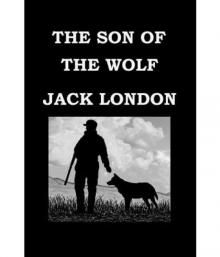 The Son of the Wolf
The Son of the Wolf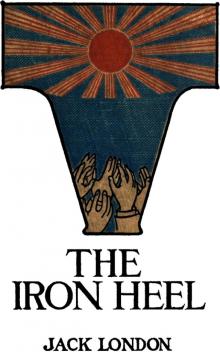 The Iron Heel
The Iron Heel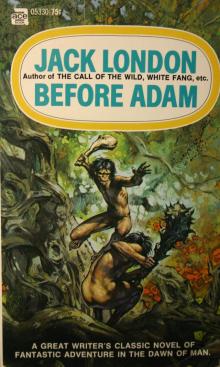 Before Adam
Before Adam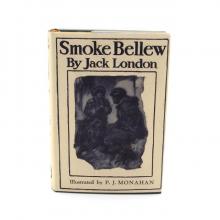 Smoke Bellew
Smoke Bellew The Call of the Wild
The Call of the Wild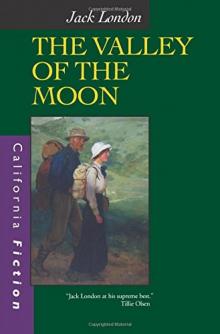 The Valley of the Moon Jack London
The Valley of the Moon Jack London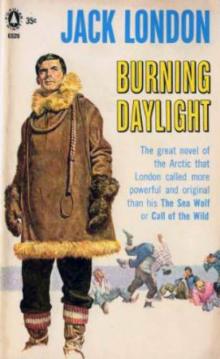 Burning Daylight
Burning Daylight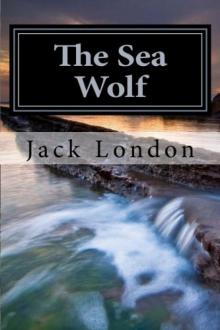 The Sea Wolf
The Sea Wolf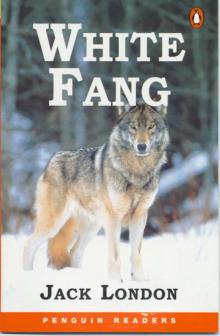 White Fang
White Fang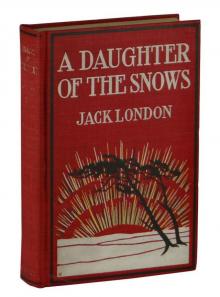 A Daughter of the Snows
A Daughter of the Snows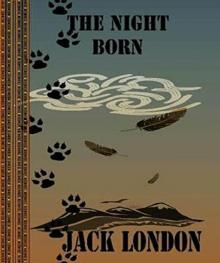 The Night-Born
The Night-Born A Son Of The Sun
A Son Of The Sun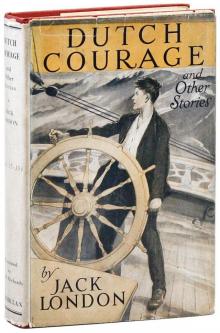 Dutch Courage and Other Stories
Dutch Courage and Other Stories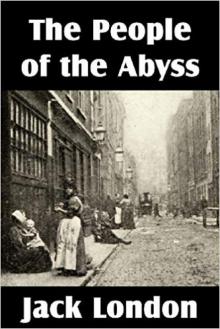 The People of the Abyss
The People of the Abyss Michael, Brother of Jerry
Michael, Brother of Jerry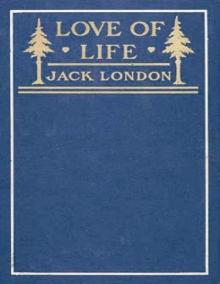 Love of Life, and Other Stories
Love of Life, and Other Stories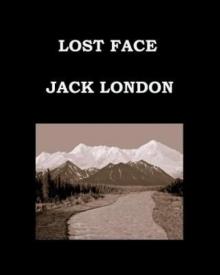 Lost Face
Lost Face The Road
The Road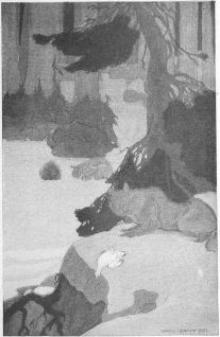 Love of Life
Love of Life The Turtles of Tasman
The Turtles of Tasman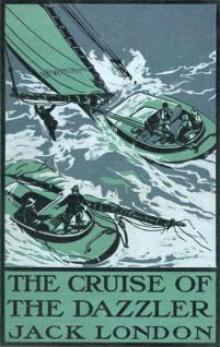 The Cruise of The Dazzler
The Cruise of The Dazzler The Heathen
The Heathen The Scab
The Scab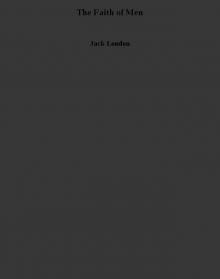 The Faith of Men
The Faith of Men Adventure
Adventure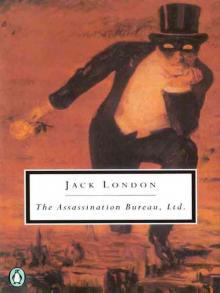 The Assassination Bureau, Ltd.
The Assassination Bureau, Ltd.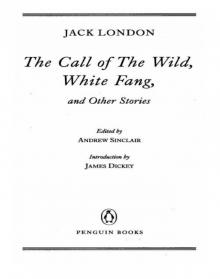 The Call of the Wild, White Fang, and Other Stories
The Call of the Wild, White Fang, and Other Stories The Call of the Wild and Selected Stories
The Call of the Wild and Selected Stories Jerry of the Islands
Jerry of the Islands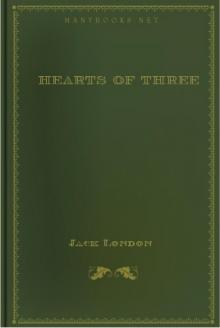 Hearts of Three
Hearts of Three The House of Pride
The House of Pride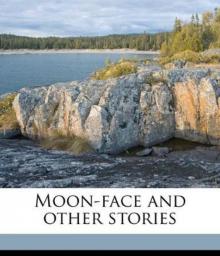 Moon-Face and Other Stories
Moon-Face and Other Stories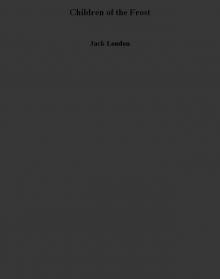 Children of the Frost
Children of the Frost South Sea Tales
South Sea Tales The Strength of the Strong
The Strength of the Strong The Jacket (The Star-Rover)
The Jacket (The Star-Rover) The Little Lady of the Big House
The Little Lady of the Big House John Barleycorn
John Barleycorn ADaugter of Snows
ADaugter of Snows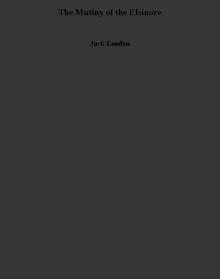 The Mutiny of the Elsinore
The Mutiny of the Elsinore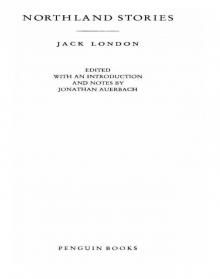 Northland Stories
Northland Stories Tales of the Fish Patrol
Tales of the Fish Patrol Call of the Wild and White Fang (Barnes & Noble Classics Series)
Call of the Wild and White Fang (Barnes & Noble Classics Series) The Valley of the Moon
The Valley of the Moon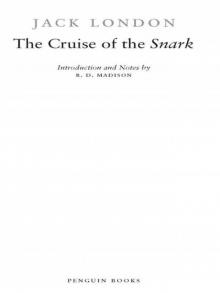 The Cruise of the Snark
The Cruise of the Snark The Game
The Game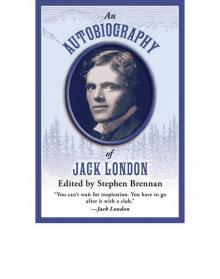 An Autobiography of Jack London
An Autobiography of Jack London